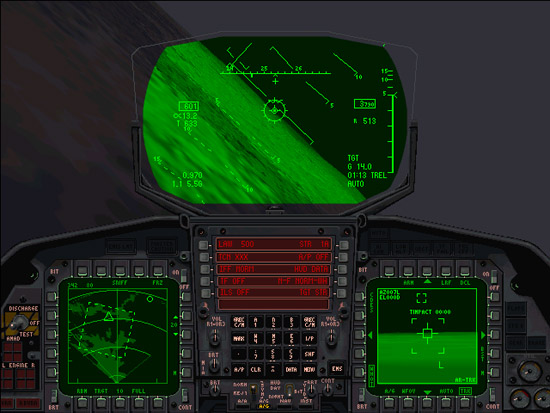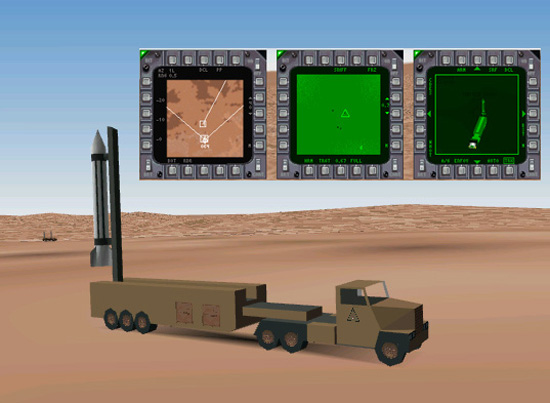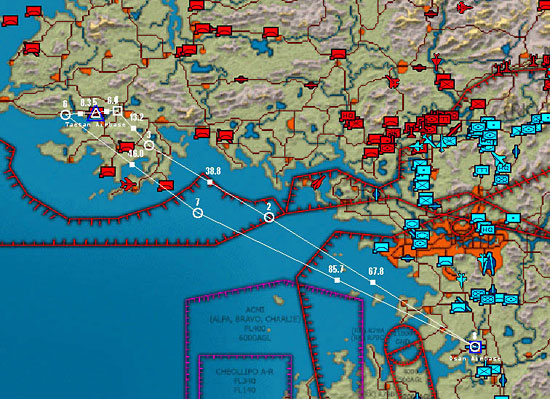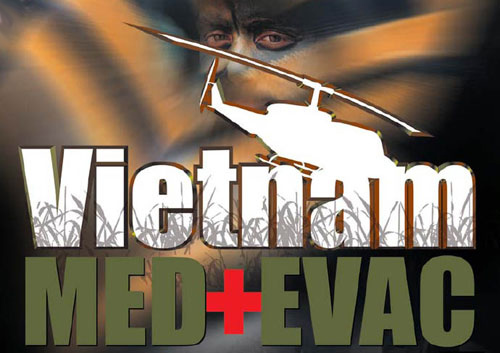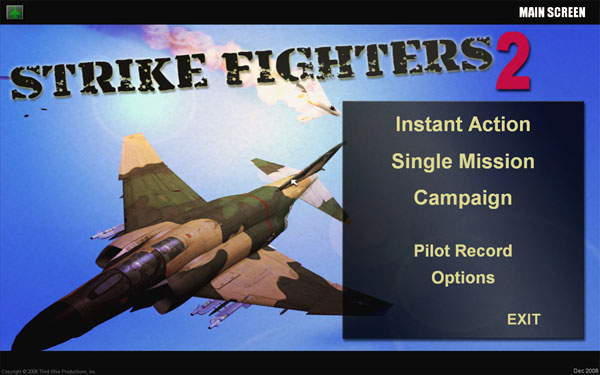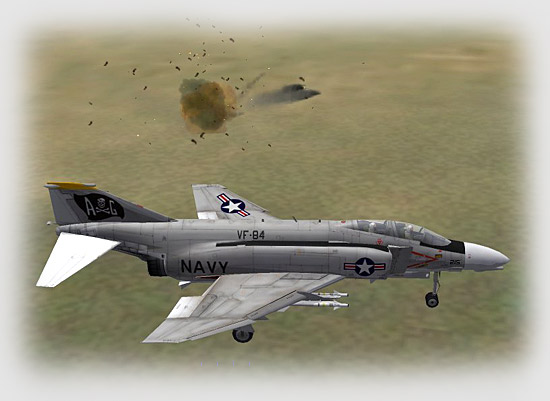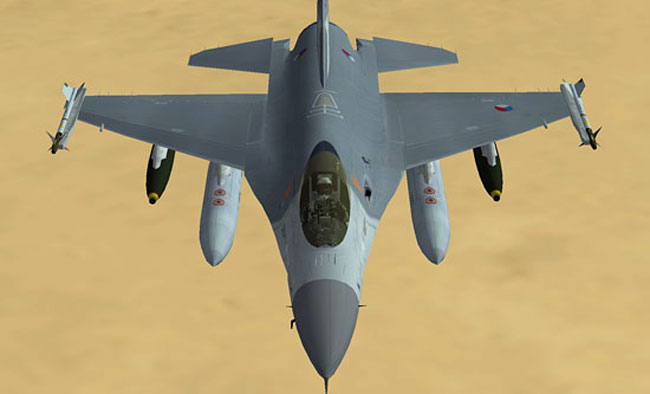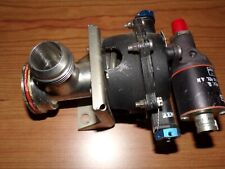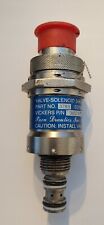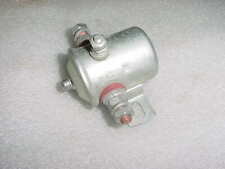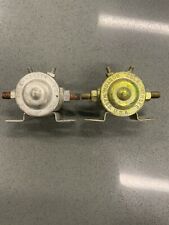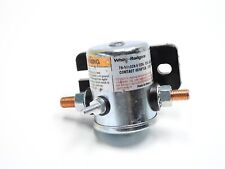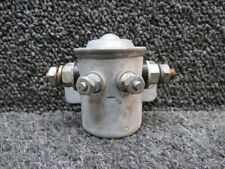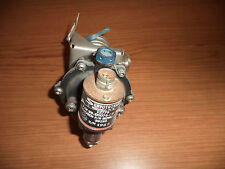Read It – Do It
by Chris “BeachAV8R” Frishmuth
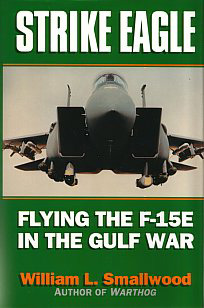 |
 |
After a long pause in the “Read It – Do It” series we’ll continue our exploration of the close relationship between the books we enjoy reading and the sims we love to play. For this issue we’ll look at a fantastic book by William Smallwood “Strike Eagle: Flying the F-15E In the Gulf War” and take a nostalgic look back at one of our favorite (and still relevant!) sims of all time: Jane’s F-15.
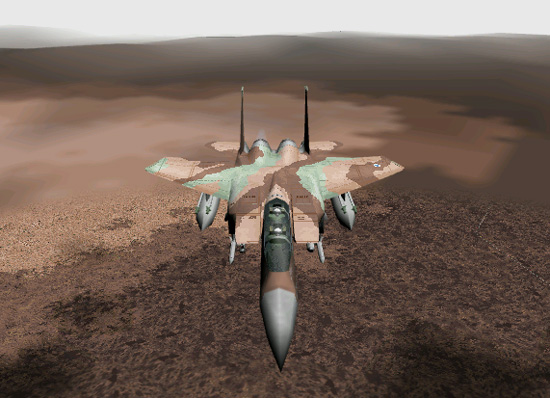
“They were flying a fighter built for all-weather operations. It was designed to fly near the speed of sound at 200 feet above the ground, at night, in clouds, to drop bombs precisely on a target; then, if necessary, fight its way home and survive combat with any of the world’s best air-to-air fighters that might attack it. Equipped with the latest and most sophisticated radars, sensors, and navigation equipment it was truly an awesome weapon.” – page 12
For many of us the first Gulf War was an unforgettable display of modern air, land, and sea power. Brought to us in real time, the images and videotape of precision guided munitions hitting their targets, and tanks roaring across the desert landscape at forty miles an hour was our first glimpse at weaponry that had been improving ever since the Vietnam War. One part of that awesome war machine was the McDonnell Douglas F-15E Strike Eagle, one of the most capable and exotic all weather attack aircraft ever developed. Indeed, the F-15E was so new that many of the crews were barely out of flight training on the aircraft when they were deployed to the Gulf to become part of Desert Shield and some of the weapons that were intended to be dropped by the “Mud Hen” were still undergoing development and flight testing. With some doubts about their abilities, their airframe, and even their mission, the Strike Eagle community took the bull by the horns and deployed to the Middle East with an overwhelming desire to prove to the world that they could adapt and overcome.
“When the Strike Eagles first arrived in Oman, the crews thought of themselves as merely a speed bump for Saddam Hussein’s forces. All they could do at that time was slow an Iraqi offensive against the oil fields of Saudi Arabia. There was no hope that they, along with the thin line of U.S. troopers on the ground, could stop a massive incursion of Saddam Hussein’s armor.” – page 45
All of us in the sim community look back on the Jane’s franchise with longing and affection. With titles such as 688, Longbow, Longbow 2, F-15, and F/A-18E, the library of realistic study sims was ever growing and each new iteration showed advances in programming and hardware capabilities. I still get dreamy thinking about my Voodoo 5-5500 AGP card that brought stunning 3DFX graphics to my monitor. And it wasn’t just the software that was incredible. I remember holding the Jane’s boxes in my hands in the store and feeling their heft, knowing full well that a beautiful spiral bound manual would be within; keycards, maps, quick reference cards — ah, those were the days! Jane’s F-15 was no exception. The centerpiece: a beautifully detailed manual that expounded on all of the systems and capabilities of the F-15E and how to take advantage of the complex avionics and weaponry. JF-15 featured front and rear cockpit capability, a Spartan but effective 3D cockpit, excellent training tutorials, campaigns, and single missions. The only really painful exclusion was the lack of cooperative multiplayer capability. I’m convinced that if JF-15 had cooperative multiplayer we’d still see large numbers of people playing online.
When the real Strike Eagles reached the Persian Gulf they got to work immediately on learning the terrain, adopting new tactics, and completing familiarization with the new technologies that would be part of this new age of warfare. It turned out that training was almost as dangerous as flying combat missions since crews routinely flew at 200’ and lower, convinced that high speed and low altitudes would be the mission profile that would save their lives against the integrated Iraqi air defenses. After several fatal mishaps the minimum ceiling was raised to 500’ during the runup to the air campaign as the featureless desert, terrible weather, sandstorms, and fatigue set in. One of the biggest concerns for the war planners was the threat that the fragile alliance of coalition forces would be torn apart if Saddam Hussein managed to bait the Israelis into entering the war by lobbing Scud missiles toward Israel. Though the Scud posed little threat militarily (it only carried a 160 lb. warhead), it represented a huge psychological terror weapon considering that they could be equipped to carry chemical and biological weapons. In order to placate the Israelis, the Strike Eagles (and other assets) were often tasked with “Scud Hunting” patrols out in the vast western desert regions of Iraq. With the combination of its powerful APG-70 synthetic aperture ground radar capabilities and LANTIRN pod (Low Altitude Navigation and Targeting Infrared for Night) the F-15E was a particularly effective aircraft at finding and striking both fixed and mobile Scud sites.
“I asked, ‘But why us?’ He [General Glosson] looked across the table and said, ‘The reason you are going to do it is because nobody else can find them at night. The F-16’s radar is not good enough to spot something of this size and there were very few F-16s with targeting pods. During the day I can send out F-16s and A-10s. But only you guys can find them at night.’” – page 47
In JF-15 you’ll be tasked with a wide variety of missions using equally diverse weapons loadouts — from standard dumb 500 to 2000 lb. bombs, to laser-guided munitions, Maverick missiles, Rockeye cluster bombs, and runway cratering Durandals. Familiarization with the advanced F-15E avionics is essential since you’ll be relying on the ground radar to find, map, designate, and attack your objective. It isn’t as simple as just pointing the nose and hitting the pickle button since mapping lag time, line-of-sight, and radar gimble limitations are all modeled. In addition you must learn how to properly set up your weapons release parameters since multiple modes and delivery options are available. Modes include Auto, CCIP, and LOFT; choosing the best mode can significantly alter your accuracy and exposure to ground threats. The rear seat Weapons System Officer cockpit offers four MFDs to allow for maximum flexibility in setting up for whatever mode of flight you are in (navigation, air-to-air, air-to-ground, etc.,). While the “Mud Hen” is particularly adept at striking ground targets it is also an extremely formidable air-to-air opponent. Multiple radar modes including RWS, TWS, STT, and a multitude of auto-acquisition modes make the –E extremely dangerous at both long and short range engagements.
“I told Yogi that I was coming off air-to-air and now I’m mapping, getting a 1.3 then zooming to a .67 [nm], and thirty seconds later I tell him it’s designated. After that I checked steering and then checked the PACS, confirming that we had twelve bombs, and the intervalometer, which controls the timed interval spacing between each bomb coming off — so all twelve don’t come off together. I can’t remember now whether I set it for six pairs or a ripple. I’m mapping now but the quality isn’t good. I don’t see shit and I tell him. ‘Okay, I’ll pop it up to 1,000 feet,’ he said. I had my RWR up and the volume up and as we climbed up the quality got better — it was a fixed Scud site with a metal fence around it that showed up clearly on the radar. I extended the map now to .67, designated it, then gave the steering to Yogi. He put the pipper on the target and then transmits — for the first time that night, ‘Dodge flight, showtime, green ‘em up.’” – page 72
Much of the fun in JF-15 is the mission planning and execution. The campaign mission planner allows you, as the flight leader, to add or subtract aircraft to your package depending on your evaluation of the mission requirements. Do you need air cover? Add a flight of air-to-air configured wingmen. Are you striking a major airfield? Designate individual targets (DPMIs) such as oil tanks, hangars, or runways to any one of your up to seven wingmen in your flight. Despite being an older sim, the artificial intelligence of the wingmen in JF-15 seems exceedingly good — and nothing is so thrilling as to see and hear the bombs popping off all around you as your “gorilla package” of aircraft descend onto a target airfield for a mass attack.
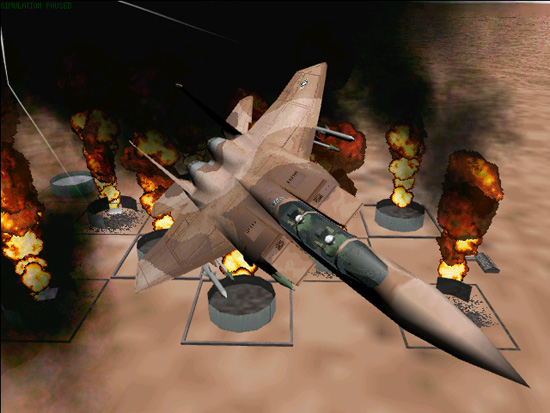
Missions in JF-15 vary just as they did for the real F-15E squadrons in the Gulf War. You can expect: Scud hunts, anti-air sweeps, precision bombing, anti-armor bombing, tank plinking, bridge busting, close air support, runway denial, high value target precision bombing (could Saddam really be in that building??), and all kinds of additional missions. The user community built dozens of custom missions as well, not to mention there is a whole different campaign included (Iran anyone?). The real beauty of JF-15 is the deep strike missions that require serious mission planning. Fuel requirements often require high altitude en route flying to reduce fuel flows, followed by low altitude attacks that only offer a chance for one pass, and multiple tanking stops both to and from the target. The refueling aspect adds a whole different dimension to the mission since hooking up to the tanker can be as stressful as flying the bombing leg.
“The biggest problem was that the pilots had to get on the boom without the help of the two guidance lights on the bottom of the tanker. One of the lights guides the pilot to the proper fore and aft position, the other to the proper up-down position. As it was, with no guidance lights, no communication between the airplanes, in turbulent clouds, fighting the throttles of their lethargic, 81,000 pound airplanes while tobogganing downhill and trying to stay on the boom — all in abject darkness, it was an aviator’s nightmare.” – page 69
The nice thing about Smallwood’s book is that it consists, in large part, of long interviews with the actual pilots that flew the missions over Iraq and Kuwait. There is no better way of recounting the harrowing accounts than to hear them recalled by the very men who flew the missions. The mission descriptions are edge-of-your-seat affairs with tales of firehose streams of AAA and countless SAM avoidance maneuvers. The aviators do a fantastic job of recalling the chaos of war, from finding tankers bumping along in massive storm clouds to trying to avoid collisions over the target area, to the terrifying knowledge that enemy aircraft are mixing in among your flight. The sheer overwhelming task saturation that was part of every mission over Iraq is incredible and I’m sure each squadron member was happy to have a second set of ears and eyes in the cockpit to manage the responsibilities. The war wasn’t without cost and several crews gave the ultimate sacrifice when they were shot down or crashed during their deployment overseas.

Once the ground war kicked off the Strike Eagle pilots smelled blood in the water. Everyone in the theater was ready to get the job done and go home, and the start of the ground war was a welcome sign that the campaign to drive Iraq out of Kuwait was finally underway. 100 hours later, the war was over. The rapidity of advance that the ground troops were able to attain was due to the relentless and accurate attrition of forces that air power had accomplished over the preceding five weeks. The Strike Eagles were an integral part of that campaign and even after the cessation of hostilities they patrolled the skies over Iraq enforcing the cease-fire.
“When the ground war kicked off there was no question that I wanted to get even with them. They dragged me eight thousand miles away from my wife and kids and I wanted to make them pay. If they would have let me fly five times a night, I would have flown five times a night.” – Capt. Bill “Bruno” “Millonig – page 185
If you are a new simmer and have never played Jane’s F-15, you owe it to yourself to take a look at this fantastic software. While great strides have been made in graphics and hardware since JF-15 was released over a decade ago (!) it still has a place in every simmer’s library. The graphics aren’t bad, the action is fantastic, and the overall game experience is comparable, and in some cases surpasses that of modern day sims. I have a recurring dream — a dream where the icons of simulation greatness (like CJ “Smut” Martin, Scott “Elf” Elson, and Matt “Wags” Wagner) come together and decide to replicate some of the old Jane’s titles with modern day programming. To say I’m content to play these older sims until that happens is a testament to their staying power. I’d encourage you to pick up and read William Smallwood’s “Strike Eagle”; it will have you scurrying to find your old Jane’s F-15 CD!

View the SimHQ Channel YouTube HD video above
or download a video of BeachAV8R flying the F-15 here.
The zipped wmv is 52MB.
Reviewer’s System Specs
• Processor – Intel Core 2 Quad Q6700
• Motherboard – ASUS P5N32-E SLI LGA 775 NVIDIA nForce 680i SLI ATX
• Memory – Crucial Ballistix 4GB DDR2 6400
• Video RAM – BFG 9800 GX2 1GB PCIe 2.0
• Hard Drive – Western Digital Raptor X 150GB
We want your Feedback. Please let us know what you thought of this article here.


